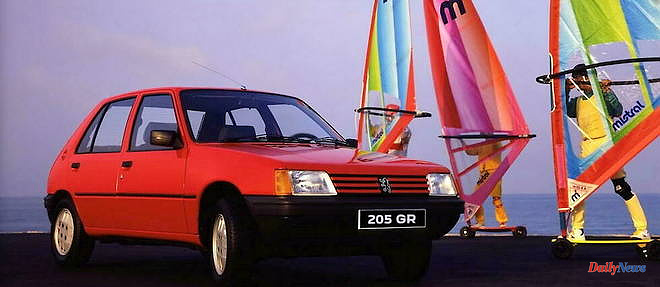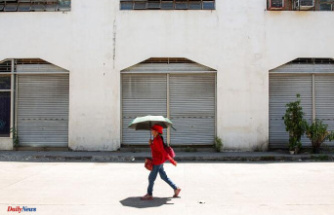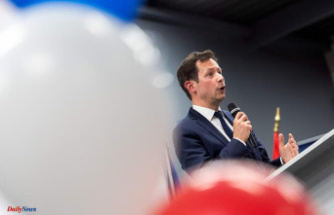Pretty, polymorphic, deploying from 45 to 200 horsepower, diesel or gasoline, the 205 tumbles onto the automotive scene like a UFO in the spring of 1983. The manufacturer is bloodless and it is the car of "it or it breaks". Jacques Calvet, who was to become president of PSA (Peugeot and Citroën), witnessed the emergence of this model as a senior civil servant converted to banking and then to industry.
He was called urgently by the Peugeot family to straighten out the manufacturer, saddled with a debt of more than 30 billion francs. The questionable takeover of Chrysler Europe and the errors in the relaunch of the Talbot brand parachute in 1982, this regular in ministerial offices and the bank at PSA, as a rectifier of a perilous situation. But the automobile, he does not know and leaves the boss of Peugeot, Jean Boillot, to carry the projects of the Lion in end tactician that he is.
Presented on February 23, 1983, the 205 is not called 105 because, located above the 104, it must also fit into the "success story" of the 200 lineage (201, 202, 203, 204) , according to Boillot's reasoning. Well seen but, beyond marketing, it was still necessary to have a coherent project. The "ouature", as Calvet says, immediately appears as a variation, a step below, of the ideas carried by the Volkswagen Golf.
Modern, it is, to the great displeasure of Pininfarina, who was not chosen to design it, Gérard Welter's house project having won. The 205 is simple, clean, readable, adorned with a grille with horizontal bars marked with the Lion, large glass surfaces and a plastic strip connecting the taillights, an idea which would later be plundered by the competition.
Above all, the architecture inspires a car well placed on the road, with its wide tracks and low front and rear overhangs. While the dimensions make it an urban one, Peugeot gives it a road vocation with an ambitious range of engines and a rear suspension by torsion bars so as not to reduce the capacity of the trunk, accessible by a tailgate.
Under the circumspect eye of Peugeot managers, made nervous by the stakes, European journalists – including the signatory of these lines – discovered the car on the very demanding roads of Morocco and in particular the crossing of the Atlas between Marrakech and Taroudant. An anticipation of the future and of his victorious participations in the Dakar. The ease of the small front-wheel drive, the judicious balance between the suspension springs and the damping are impressive, while the passenger compartment designed by Paul Bracq gives a welcome modern touch, hailed by the press.
The enthusiasm of the four petrol engines and a diesel is already a character trait that was to open up a sporting career. The GTI in 1984 shakes up the Golf's hegemony with 105 hp, immediately supported by the incredible Turbo 16 execution of 200 hp with a mid-rear engine, built to face rallying in Group B, the premier category.
Under the enlightened impulse of Jean Todt, Vatanen won three rallies in the first season then, in 1985 and 1986, the Turbo 16 won the constructors' world title, while Timo Salonen (1985) then Juha Kankkunen (1986) won the driver's title. . Deemed too dangerous, Group B cars were banned at the end of 1987, but the 205 converted to rally-raid and won with Vatanen in 1987 and then Kankkunen in 1988.
Fueled by these successes, the road 205 did not stand still, the GTI increasing to 115 and 130 hp. We remember this advertising clip of a 205 GTI chased, James Bond style, by a Bomber. She even hit the headlines with her competition diesel. The 1769 cc engine was too big for the car but it was the only one available in the organ bank and so, in 1990, the 78 bhp strong turbo diesel was born.
Before that, Junior versions with denim seats, Rallye for a young and accessible sports car, cabriolet designed as a consolation prize by Pininfarina or Roland-Garros keep the flame going. It will not be blown until 1998, after 15 years and 5,278,300 copies have been sold and a successful recovery of the Lion which owes it a lot. The torch has been passed on to the 206, 207, 208, probably the last to inherit the spirit of the 205 before giving way to future electric generations. Another story.












